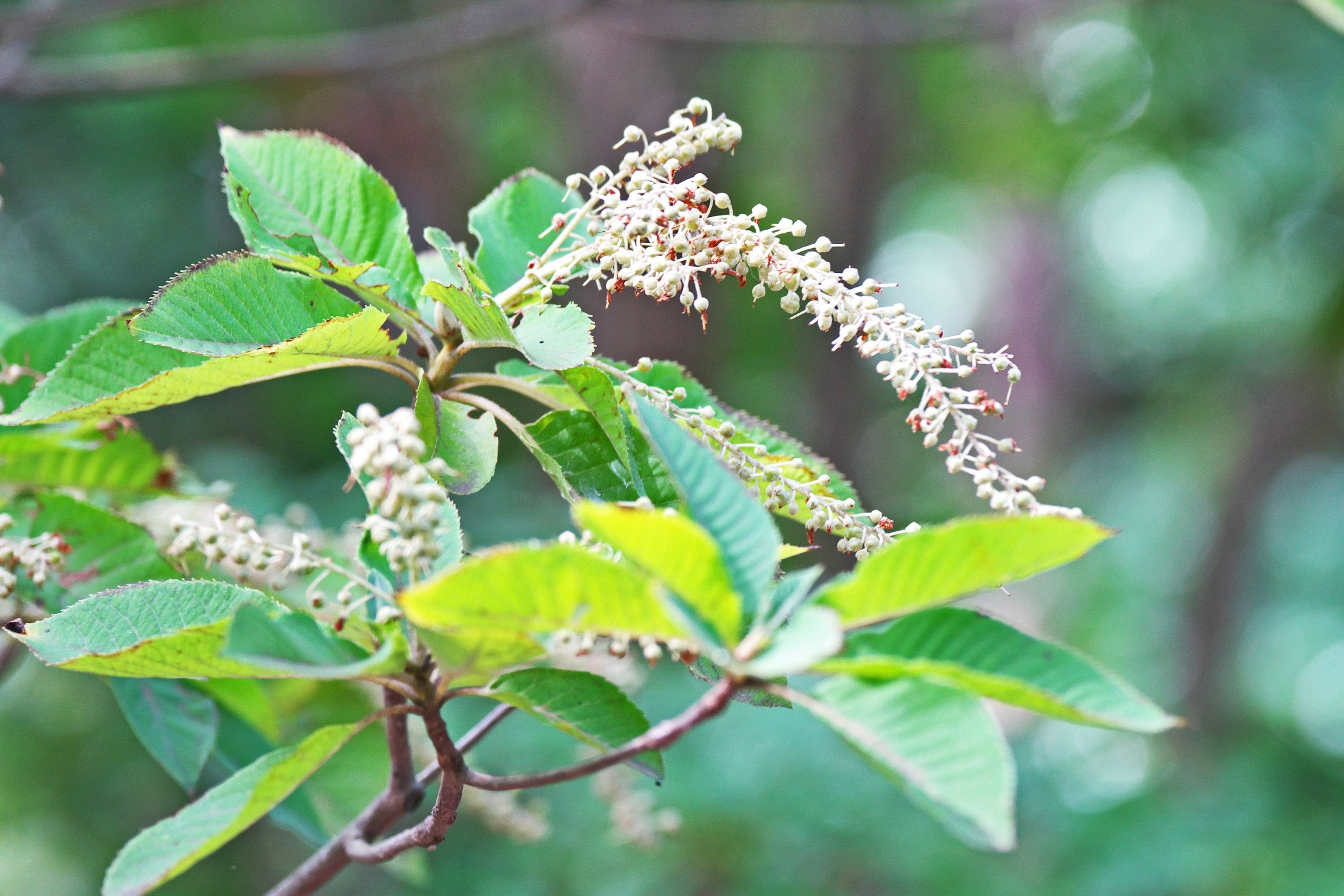Sweet pepperbush
(Clethra alnifolia)

Description
Clethra alnifolia, commonly known as Sweet Pepperbush or Summersweet, is a deciduous shrub that belongs to the family Clethraceae. It is native to eastern North America and can be found growing in swamps, bogs, and moist woodlands from Nova Scotia to Florida. This plant is valued for its attractive, fragrant flowers that bloom in mid-summer and its tolerance of wet soils. Description: Sweet Pepperbush is a medium-sized shrub that can reach a height of 3 to 8 feet and a width of 4 to 6 feet. The plant has a rounded, bushy habit with multiple stems emerging from the base. The bark is grayish-brown and smooth when young, becoming rough and fissured with age. The leaves are alternate, simple, and ovate to elliptical in shape, measuring 2 to 4 inches long and 1 to 2 inches wide. They have serrated edges and a glossy, dark green color. In the fall, the leaves turn yellow and sometimes red. Flowers: The most striking feature of Sweet Pepperbush is its flowers, which bloom in mid-summer, typically from July to August. The flowers are white or pinkish-white, fragrant, and arranged in dense, cylindrical spikes that can be up to 6 inches long. Each spike can contain hundreds of individual flowers, and each flower has a tubular shape with five petals. The flowers are pollinated by bees and other insects, and the plant is a valuable source of nectar for honeybees. Fruits: The fruits of Sweet Pepperbush are small, woody capsules that contain numerous seeds. The capsules persist on the plant after the flowers have faded and turn brown in the fall. The seeds are dispersed by wind. Cultivation: Sweet Pepperbush is a relatively easy plant to cultivate and is well suited to wet, acidic soils. It prefers full sun to partial shade and will tolerate a range of soil types, including sandy, loamy, and clay soils. It is also tolerant of salt spray and can be grown in coastal areas. The plant can be propagated by cuttings, layering, or seed. Uses: Sweet Pepperbush is primarily grown as an ornamental plant for its attractive flowers and foliage. It is often used in mixed borders, as a specimen plant, or as a hedge. The plant is also valued for its tolerance of wet soils and can be used in rain gardens or other water features. In addition, the leaves and bark of the plant have been used for medicinal purposes in traditional Native American medicine. Pests and Diseases: Sweet Pepperbush is generally free of serious pests and diseases, although it may be susceptible to powdery mildew, leaf spot, and scale insects. It is also occasionally browsed by deer. Conclusion: In conclusion, Clethra alnifolia, or Sweet Pepperbush, is an attractive and versatile shrub that is native to eastern North America. It is valued for its fragrant flowers, tolerance of wet soils, and ease of cultivation. Whether used in mixed borders, as a specimen plant, or in rain gardens, Sweet Pepperbush is a valuable addition to any landscape.
Taxonomic tree:







